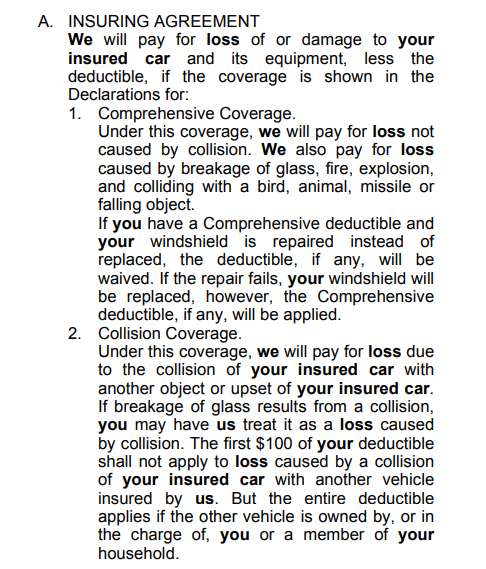See This Report on Pacific Prime
Fascination About Pacific Prime
Table of ContentsExcitement About Pacific PrimeThe Facts About Pacific Prime UncoveredWhat Does Pacific Prime Mean?The 2-Minute Rule for Pacific PrimeThe Only Guide for Pacific Prime

This is since the information were gathered for a duration of solid economic efficiency. Of the approximated 42 million people who were without insurance, just about about 420,000 (regarding 1 percent) were under 65 years of age, the age at which most Americans come to be eligible for Medicare; 32 million were adults in between ages 18 and 65, about 19 percent of all grownups in this age; and 10 million were kids under 18 years old, about 13.9 percent of all youngsters (Mills, 2000).
These estimates of the variety of individuals uninsured are created from the annual March Supplement to the Present Populace Study (CPS), conducted by the Demographics Bureau. Unless or else kept in mind, nationwide quotes of individuals without medical insurance and percentages of the populace with different type of insurance coverage are based on the CPS, the most commonly utilized resource of price quotes of insurance policy protection and uninsurance rates.
10 Simple Techniques For Pacific Prime
:max_bytes(150000):strip_icc()/how-does-insurance-sector-work.asp-FINAL-1ccff64db9f84b479921c47c008b08c6.png)
Still, the CPS is especially beneficial due to the fact that it generates yearly quotes fairly promptly, reporting the previous year's insurance policy protection approximates each September, and since it is the basis for a consistent set of estimates for more than two decades, permitting analysis of trends in coverage over time. For these factors, along with the extensive use the CPS in various other research studies of insurance coverage that are presented in this record, we count on CPS quotes, with constraints kept in mind.

The quote of the number of without insurance individuals broadens when a population's insurance policy condition is tracked for numerous years. Over a three-year period starting early in 1993, 72 million people, 29 percent of the U.S. https://pacificpr1me.wordpress.com/2024/04/03/pacific-prime-your-gateway-to-comprehensive-international-health-insurance-solutions/. population, were without coverage for at the very least one month. Within a solitary year (1994 ), 53 million individuals experienced at the very least a month without protection (Bennefield, 1998a)
Six out click for more of every ten without insurance grownups are themselves utilized. Although working does improve the likelihood that and one's member of the family will certainly have insurance coverage, it is not an assurance. Also members of families with 2 full time wage earners have almost a one-in-ten opportunity of being uninsured (9.1 percent uninsured price) (Hoffman and Pohl, 2000).
Pacific Prime Fundamentals Explained
New immigrants represent a significant proportion of individuals without health and wellness insurance coverage. One evaluation has connected a significant part of the current growth in the size of the united state uninsured populace to immigrants who showed up in the nation in between 1994 and 1998 (Camarota and Edwards, 2000). Recent immigrants (those that involved the United States within the past four years) do have a high price of being without insurance (46 percent), however they and their youngsters account for simply 6 percent of those without insurance country wide (Holahan et al., 2001).
The partnership in between medical insurance and access to care is well established, as documented later in this phase. The connection between health and wellness insurance policy and wellness end results is neither straight nor basic, a considerable clinical and health solutions study literary works links health insurance policy protection to enhanced access to care, better quality, and boosted individual and population health status.
Degrees of analysis for analyzing the effects of uninsurance. It concentrates specifically on those without any kind of health and wellness insurance for any kind of length of time.
Pacific Prime Fundamentals Explained
The problems dealt with by the underinsured are in some respects similar to those faced by the uninsured, although they are typically much less extreme. Wellness insurance coverage, however, is neither essential neither adequate to acquire access to medical services. The independent and direct result of health and wellness insurance coverage on access to health solutions is well established.
Others will get the health treatment they need even without medical insurance, by paying for it out of pocket or seeking it from carriers who offer treatment complimentary or at very subsidized prices. For still others, health and wellness insurance alone does not make certain receipt of treatment as a result of various other nonfinancial barriers, such as an absence of health and wellness treatment suppliers in their community, restricted accessibility to transportation, illiteracy, or etymological and cultural distinctions.
The Greatest Guide To Pacific Prime
Official research regarding without insurance populaces in the USA dates to the late 1920s and very early 1930s when the Board on the Cost of Medical Care created a series of reports regarding funding physician office visits and hospitalizations. This concern came to be salient as the numbers of medically indigent climbed during the Great Clinical depression.